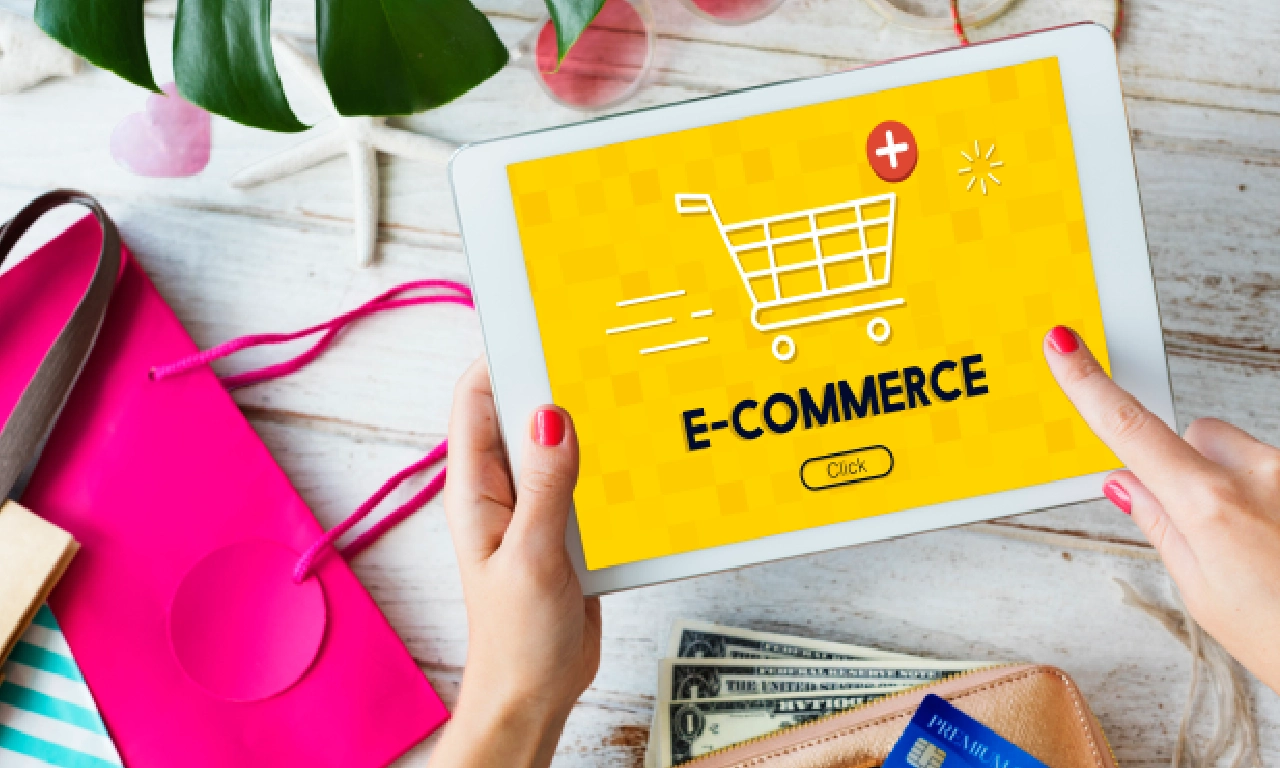Top Indian E-Commerce Startups: Quick Commerce & B2B

E-commerce startups are companies built around selling goods or services online. They include marketplaces (like a B2C platform connecting third-party sellers with buyers), direct-to-consumer (D2C) brands selling their own products, and niche platforms (for example, grocery delivery or fashion stores).
These ventures operate on models such as B2C, B2B, C2C or subscription commerce. In markets like India (population 1.4 billion), online retail has exploded: Statista projects 427 million online shoppers by 2027 and an e-commerce market worth ~$300 billion by 2030. In short, an e-commerce startup leverages web/mobile technology, digital payments and logistics to bring products to customers 24/7 via the internet.
Why E-Commerce Startups Matter
Global online retail is booming, making e-commerce a must-watch sector. Worldwide e-commerce revenue is projected at $3.64 trillion in 2024 (up 15.6% from 2023)[1]. In India alone, the market is on track to reach roughly $400 billion by 2030[2].
New technologies (mobile apps, AI personalization, AR/VR try-ons) have "wiped off" the gap between online and in-store shopping. Consumers now demand the convenience, variety and personalized experiences that only digital channels can deliver. For businesses, this shift solves core pain points: e-commerce removes geographic limits and operating hours, enabling 24/7 sales far beyond a local storefront.
In practice, selling online lets startups reach millions of customers with lower overhead (no physical rent) and use data to optimize pricing and marketing. Put simply, consumers expect digital shopping, and companies ignoring this trend risk losing market share to nimbler rivals.
How Do E-Commerce Startups Work?
At a high level, an e-commerce startup builds an online store or platform and connects it to customers through marketing and fulfillment. Key components include a digital storefront (website or app), a product catalog, online checkout/payment systems, and a logistics network to deliver orders.
For example, a D2C fashion brand might set up an app to display clothing (step 1), integrate payment gateways (UPI, credit cards) to handle transactions (step 2), and partner with couriers or run its own warehouse for shipping (step 3). Meanwhile, marketing teams use SEO, social media, influencers and ads (step 4) to drive traffic. Behind the scenes, e-commerce founders leverage data analytics and AI to improve everything: recommendation engines suggest products, chatbots handle customer queries, and inventory algorithms forecast demand.
Tools like GrowthJockey's Intellsys and OttoSuite (venture-building platforms) exemplify modern e-commerce tech – they offer real-time funnel analytics and automated workflows so startups can track leads and automate tasks. In practice, the typical process is:
-
Build or choose a platform: Launch a website/app using e-commerce software (Shopify, Magento) or custom code. Set up product pages, search, cart and a secure checkout.
-
Onboard products and suppliers: Add your own inventory (for D2C) or recruit sellers (for marketplaces). Ensure images, descriptions and pricing are optimized.
-
Integrate payments: Connect to payment gateways (Razorpay, Stripe, Paytm) and wallets (Google Pay, PayPal) so customers can pay online or on delivery.
-
Set up logistics and fulfillment: Partner with courier companies or run warehouses. Automate order routing from your system to the fulfillment center so packages ship quickly.
-
Marketing and launch: Run SEO, social ads, email and affiliate campaigns. Use analytics dashboards to monitor conversion rates, cart abandonment, and optimize based on real user data.
E-commerce startups today also lean heavily on AI and automation. For instance, AI chatbots can qualify leads or answer support tickets 24/7, and machine learning can dynamically adjust prices and promotions. GrowthJockey brings this full circle by embedding "operational excellence into every phase" – using our AI-driven venture framework, we help e-commerce founders validate ideas, build MVPs, and scale with data-driven strategy. For example, our Intellsys platform offers real-time funnel insights, and OttoPilot automates lead routing, so teams can execute their online sales process efficiently.
Top E-commerce Brands of India
India’s e-commerce landscape has rapidly evolved into a multi-format ecosystem spanning social commerce, quick-commerce, omnichannel retail, and full-scale marketplaces. From mass-market platforms like Flipkart and Amazon to category specialists like Nykaa, FirstCry, and Lenskart, each player brings a unique model shaped by funding, logistics, consumer behavior, and regional demand. Below is a consolidated breakdown of the country’s leading e-commerce startups and platforms, with key details, company profiles, and their distinct value propositions.
1. Meesho
Website: meesho.com
Headquarters: Bengaluru, Karnataka
Employee Size: ~2000+
Funding Raised: ~$1.1B+
Investors: SoftBank, Meta, Prosus, Sequoia, B Capital
About (70–80 words):
Meesho is a social commerce platform enabling millions of small sellers and home-based entrepreneurs to sell across WhatsApp, Instagram, and other social channels. Operating primarily in Tier-2/3 India, it offers a wide assortment of lifestyle, fashion, home, and beauty products. With simplified seller onboarding, integrated logistics, and a strong mobile-first experience, Meesho lowers barriers to online selling and supports micro-entrepreneurs through easy catalog-sharing, automated order handling, and doorstep delivery.
USP (70–80 words):
Meesho’s zero-commission model uniquely empowers resellers to earn without upfront costs or marketplace fees. Its strength lies in deep Bharat penetration, lean logistics, and a social-first growth engine that drives viral discovery. The platform’s data-driven supply chain ensures low prices and rapid catalog expansion. By linking community-driven selling with scalable e-commerce infrastructure, Meesho stands out as India’s most accessible platform for value-focused buyers and first-time digital sellers.
2. Nykaa
Website: nykaa.com
Headquarters: Mumbai, Maharashtra
Employee Size: ~2000+
Funding Raised: Multiple rounds; now public
Investors: Fidelity, TPG, Steadview, others
About (70–80 words):
Nykaa is a leading beauty, fashion, and wellness retail brand operating through both D2C and marketplace models. It offers thousands of curated SKUs from global and Indian brands, supported by strong content, influencer-driven discovery, and beauty education. Nykaa’s omnichannel strategy integrates its app, website, and a nationwide chain of physical stores, offering consistent experiences across platforms. Its premium positioning and content-led brand building have helped it become India’s top beauty destination.
USP (70–80 words):
Nykaa’s core strength lies in its curation-first approach, which helps consumers navigate beauty categories with clarity and trust. The brand’s offline presence, detailed reviews, shade-match tools, and educational content reduce purchase anxiety. Nykaa also runs its own high-performing private labels that complement marketplace offerings. With deep brand partnerships, a loyal community, and a content-driven funnel, Nykaa delivers unmatched credibility and personalization in India’s beauty and lifestyle space.
3. Lenskart
Website: lenskart.com
Headquarters: Gurugram, Haryana
Employee Size: Large retail + ops teams
Funding Raised: $1B+
Investors: SoftBank, Temasek, KKR, ADIA
About (70–80 words):
Lenskart is an omnichannel eyewear retailer offering prescription glasses, sunglasses, and contact lenses. It operates through a vertically integrated model covering design, manufacturing, and distribution, enabling strong cost control and quality assurance. With hundreds of offline stores and a large online presence, Lenskart has built strong brand recall and reliability. Its home eye-test services, digital try-on features, and subscription programs add convenience and accessibility for customers across India.
USP (70–80 words):
Lenskart’s advantage lies in its vertically integrated supply chain, which allows it to deliver high-quality eyewear at competitive prices. Innovations like 3D virtual try-ons, at-home eye checkups, and fast fulfillment create a seamless hybrid shopping experience. Its franchise-led offline model accelerates expansion while maintaining uniform service. Strong quality control, stylish in-house product lines, and fast delivery make Lenskart a category leader in accessible and fashionable eyewear.
4. FirstCry
Website: firstcry.com
Headquarters: Pune, Maharashtra
Employee Size: ~2000+
Funding Raised: Multiple rounds
Investors: Various PE/VC funds
About (70–80 words):
FirstCry is India’s largest omni-channel retailer specializing in baby, kids, and maternity products. Its deep category coverage includes diapers, clothing, toys, gear, feeding essentials, and more. With both physical stores and an extensive online platform, it serves parents looking for convenience and reliable products. FirstCry also runs parenting communities, educational content, and hospital partnerships, building trust during early parenthood. Its nationwide distribution ensures availability across metros and smaller cities.
USP (70–80 words):
FirstCry’s biggest strength is its category specialization, offering unmatched depth across baby and kids’ essentials. Its strong brand trust, nationwide store network, and easy ordering experience make it the default choice for new parents. Loyalty programs, curated recommendations, and exclusive partnerships with global baby brands enhance customer value. With a supply chain optimized for bulky and recurring-purchase items, FirstCry ensures reliable delivery, product authenticity, and continuous engagement with young families.
5. Blinkit
Website: blinkit.com
Headquarters: Gurgaon, Haryana
Employee Size: Not publicly disclosed
Funding / Acquisition: Acquired by Zomato for $568M
About (70–80 words):
Blinkit is India’s fastest-growing quick-commerce platform, delivering groceries, FMCG, essentials, and daily-use items within minutes. Using a dense network of dark stores across major cities, Blinkit optimizes hyperlocal sourcing and last-mile delivery. After its acquisition by Zomato, it expanded aggressively into new categories including stationery, electronics accessories, and home needs. The platform’s app experience emphasizes speed, real-time inventory visibility, and convenience for urban consumers with busy lifestyles.
USP (70–80 words):
Blinkit’s USP is ultra-fast delivery, enabled by tightly packed dark stores and optimized routing algorithms. Its high SKU availability, predictable delivery times, and reliability make it a go-to option for instant needs. The platform’s expansion into non-grocery quick-commerce categories differentiates it from traditional grocery platforms. With strong operational discipline, Blinkit ensures low delivery times, strong unit economics per micro-warehouse, and an increasingly habit-forming customer experience.
6. Zepto
Website: zepto.in
Headquarters: Mumbai
Employee Size: Not publicly disclosed
Funding Raised: ~$1B+ across rounds
Investors: General Catalyst, Lightspeed, Nexus
About (70–80 words):
Zepto is an ultra-fast grocery delivery startup operating via a network of high-efficiency dark stores across major Indian cities. With significant funding and rapid expansion, Zepto delivers essentials, fresh fruits, vegetables, snacks, and home products in minutes. Its focus on operational excellence, young leadership, and city-level density has fuelled strong adoption among urban millennials. Zepto continues to add new SKUs and categories to strengthen convenience-based shopping.
USP (70–80 words):
Zepto’s strength lies in its precision-driven operational model, emphasizing speed, stock accuracy, and micro-fulfillment optimization. It uses demand forecasting, tight delivery radiuses, and data-heavy inventory planning to deliver consistent sub-10-minute experiences. Zepto’s brand identity centers on reliability and youth-focused convenience, making it highly appealing for impulse and emergency purchases. Its tech-first culture, efficient dark stores, and rapid scaling capability set it apart in India’s quick-commerce space.
7. BigBasket
Website: bigbasket.com
Headquarters: Bengaluru
Employee Size: Large operations team
Funding Raised: Multiple rounds
Investors: Alibaba, Mirae Asset, CDC
About (70–80 words):
BigBasket is India’s largest online grocery and fresh produce retailer, offering an extensive range of fruits, vegetables, staples, dairy, bakery, and home essentials. With nationwide warehousing, cold-chain capabilities, and subscription models, BigBasket caters to planned weekly and monthly household shopping. Its platform supports large baskets, scheduled deliveries, and specialized categories like organic produce. Deep sourcing relationships with farmers and manufacturers ensure product freshness and reliability across regions.
USP (70–80 words):
BigBasket’s differentiated strength is its robust supply chain, especially in fresh produce and perishables—a category challenging for most marketplaces. Its vast catalog, scheduled delivery options, and big-basket convenience attract families and monthly planners. Subscription services, milk delivery, and value packs help retain habitual customers. BigBasket’s quality assurance, consistency across cities, and reliable cold-chain logistics make it a trusted choice for households seeking dependable grocery deliveries.
8. Snapdeal
Website: snapdeal.com
Headquarters: New Delhi
Employee Size: Not disclosed (historically large seller base)
Funding Raised: Multiple rounds
Investors: Various VC/PE funds
About (70–80 words):
Snapdeal is a value-focused e-commerce marketplace targeting price-sensitive buyers across India, particularly in Tier-2/3 towns. It offers affordable fashion, home goods, electronics accessories, and lifestyle products through a large seller network. Snapdeal positions itself as a marketplace for budget-conscious shoppers rather than premium or branded buyers. By specializing in unbranded and regional value products, it provides a broad assortment not always found on mainstream marketplaces.
USP (70–80 words):
Snapdeal’s USP lies in its strong value-commerce positioning, serving Bharat’s budget audience with low-cost, functional products. Its seller ecosystem from smaller towns enables unique, affordable inventory not available on Flipkart or Amazon. The platform’s streamlined operations, lightweight app, and low-price guarantees support high conversion among price-first buyers. Snapdeal thrives by focusing on affordability, regional product variety, and reliability for everyday use cases.
9. Flipkart
Website: flipkart.com
Headquarters: Bengaluru
Employee Size: 30,000+
Funding / Acquisition: Majority acquired by Walmart ($16B)
Investors: Walmart, Tiger Global (historic), Accel (historic)
About (70–80 words):
Flipkart is one of India’s largest e-commerce marketplaces, offering products across electronics, fashion, home, FMCG, and more. It operates a massive supply chain with warehouses, delivery hubs, and last-mile logistics under Ekart. Flipkart helped build India’s online shopping habit with innovations like Cash-on-Delivery, Big Billion Day, and aggressive pricing. Its ecosystem includes Myntra, PhonePe (now separated), and strong seller services that support millions of small businesses.
USP (70–80 words):
Flipkart’s advantage lies in its deep logistics network, competitive pricing strategies, and strong fashion segment leadership. Its Big Billion Days and exclusive smartphone launches create recurring demand peaks. Personalized recommendations, rapid delivery, and easy returns enhance customer trust. Flipkart also empowers MSMEs through financing, training, and fulfillment programs. Its scale, marketplace diversity, and strong operational control make it a dominant force in Indian e-commerce.
10. Amazon India
Website: amazon.in
Headquarters: Bengaluru
Employee Size: 100,000+ (India operations + logistics)
Funding Raised: Backed by Amazon Global
Investors: Amazon (Parent Company)
About (70–80 words):
Amazon India is a full-scale e-commerce marketplace offering millions of products across all categories, supported by Prime, Amazon Pay, and a vast fulfillment network. It operates advanced warehousing, same-day delivery, and strong customer service infrastructure. Amazon also drives small business digitization through programs like Saheli, Karigar, and Launchpad. With powerful search, ratings, personalization, and A-to-Z Guarantee, it is one of India’s most trusted online shopping destinations.
USP (70–80 words):
Amazon’s USP is its unmatched reliability: fast Prime delivery, dependable customer service, and a massive selection covering every price range. Its technology stack powers precise recommendations, efficient last-mile delivery, and high-level quality control. Programs like fulfilled-by-Amazon (FBA) improve seller logistics and customer trust. The combination of convenience, transparency, returns, and subscription benefits through Prime gives Amazon a superior retention engine and industry-leading customer satisfaction.
Common Pitfalls & Myths to Avoid
While the opportunities are huge, new e-commerce founders must sidestep common mistakes. Key pitfalls include:
- Skipping Market Research: Don't assume your product will sell itself. Many startups launch without validating real demand. Always test with a small pilot or pre-orders before scaling.
- Ignoring User Experience: A slow website or confusing checkout drives buyers away. Prioritize a smooth mobile-first interface - most shoppers are on phones. Overlooking UX on E-commerce is a fatal flaw.
- Underestimating Logistics: Some founders forget that selling online means managing warehouse, inventory or courier partnerships. Failing to plan efficient fulfillment leads to delays and unhappy customers.
- Relying on Discounts: Competing only on price can burn cash. Aggressive discounting may drive initial users, but it hurts margins long-term. Build value (better selection, service) rather than just price cuts.
- Neglecting Marketing: "Build it and they will come" is a myth. You must invest in SEO, paid ads, social and content marketing to attract traffic. Without consistent acquisition efforts, even great products stay unknown.
- Ignoring Regulations: Compliance matters. Depending on what you sell (e.g., food, health products, electronics), there are quality standards, digital payment rules, tax laws, and data privacy regulations. Legal issues or GST missteps can stall a business.
- Poor Data Practices: Not using analytics or ignoring customer feedback means missing opportunities. Always track conversion rates, customer retention, and adapt your strategy. Decisions based on gut alone often fail.
By avoiding these myths and mistakes - and building iteratively with user feedback - startups improve their odds of success in e-commerce.
Benefits and Impact of E-Commerce
For founders and companies, the rewards of doing e-commerce right are significant:
- Expanded Market & 24/7 Sales: Selling online means reaching customers nationwide (or even globally) around the clock. There's no geographic "border", so your addressable market can scale into the millions or more.
- Lower Overhead: Without the costs of physical stores (rent, utilities, large staff), e-commerce startups can start lean. This often translates to better cash burn and higher returns for investors.
- Rich Customer Data: Every click and purchase is tracked. Startups gain insights into customer preferences, peak buying times, churn rates and more. This data can be leveraged to personalize marketing, improve products and forecast demand – advantages impossible in traditional retail.
- Automation & Efficiency: Technologies like AI-driven recommendations, chatbots and automated email marketing save time. Routine tasks (inventory reordering, ad bidding, customer support) can be handled automatically, letting small teams achieve more.
- Higher Profit Margins: Directly controlling the online channel lets brands capture margins that would otherwise go to middlemen. For example, D2C consumer brands often enjoy 10–30% higher gross margins than they'd have selling through retail outlets.
- Scalability: Once the digital infrastructure is in place, scaling (adding new products or entering new cities) is faster. The same e-commerce platform can handle hundreds of SKUs and hundreds of thousands of users with proportionally small team increases.
- Competitive Edge: In fast-moving markets, being online signals modernity to customers. It allows easy experimentation with new services (subscription boxes, flash sales, social media shops) that differentiate a brand from legacy players.
Put simply, a well-run e-commerce startup can turn an initial idea into a quickly growing business that transforms industries. For example, Stanford researchers estimate that average households gain over $1,000/year in buying power from online shopping[3], underscoring how much consumer surplus (and thus opportunity) digital commerce creates.
Conclusion + Next Steps
E-commerce startups sit at the intersection of consumer demand and digital innovation. The next decade will be defined by how well new companies harness AI, mobile tech and analytics to meet shopper needs (whether that's faster grocery delivery, hyper-personalized online stores, or completely new retail formats). Success requires addressing real pain points – for instance, saving customers time and money or opening up new revenue streams for traditional merchants. Founders who can offer a seamless online experience, coupled with efficient operations, will capture outsized market share as the industry grows.
Crucially, such ventures must be resilient and scalable. That means tight unit economics (managing inventory and logistics costs), a loyal user base (via excellent service), and the ability to evolve (e.g., expanding categories or adding channels like voice commerce). In a sense, e-commerce startups of 2025 are not just online stores – they are digital platforms and data engines. The winners will be those who continuously learn from customers and iterate faster than competitors.
How GrowthJockey Can Help E-Commerce Startups
GrowthJockey is a full-stack venture builder that helps e-commerce startups design, validate, build and scale their businesses. We partner with founders from idea through expansion, applying our AI-driven venture architecture to the online retail space. Our proven system combines automation and data-intelligence to ensure structured execution. For example, GrowthJockey's own tools (Intellsys and OttoSuite) deliver real-time funnel analytics and automated workflows that let e-commerce teams optimize marketing and sales processes with minimal effort. By embedding operational excellence and a "system-first" approach into every step, we help founders reach product-market fit faster, reduce go-to-market time, and build a reliable growth engine.
Whether you're launching a D2C brand or a new marketplace, GrowthJockey provides the frameworks and tech needed to iterate quickly. We help refine your business model (marketplace vs SaaS vs brand), analyze customer data to improve targeting, and craft a go-to-market strategy aligned with investor expectations. In short, GrowthJockey equips e-commerce entrepreneurs with the strategy, processes and AI tools to turn ideas into thriving, scalable ventures.
FAQs about E-Commerce Startups
Q1: Which are the top e-commerce startups in India?
Some of the most notable Indian e-commerce players include leaders like Meesho, to category specialists such as Nykaa (beauty), Lenskart (eyewear), and FirstCry (baby products). The quick-commerce wave is driven by Blinkit and Zepto, while large marketplaces like Flipkart and global giant Amazon India anchor the mainstream retail ecosystem.
Q2: What are some promising e-commerce startup ideas for 2025?
Hot new areas include AI-driven personalization (smart recommendation engines, dynamic pricing), social commerce (selling via WhatsApp/Instagram – an $80B opportunity by 2030), and AR/VR shopping (virtual try-on for apparel or home decor). Subscription and recurring commerce models (e.g. meal kits, niche product boxes) remain popular.
Q3: How can a new e-commerce startup attract funding?
Investors look for a clear market need, growth metrics, and strong unit economics. To attract funding, demonstrate traction (user growth or sales), a large addressable market, and differentiators. Show how your tech (for example, a unique AI algorithm or supply chain process) gives you an edge. Partnerships or pilots with established retailers can prove viability.
Q4: Which countries lead in e-commerce innovation?
The United States and China are the largest e-commerce markets. The US has the biggest tech investment (Amazon, Walmart, Shopify in Silicon Valley), accounting for roughly 25% of global online retail. China leads in sales volume (together with Asia at 53% of global e-commerce) through giants like Alibaba and JD.com. In Europe, the UK and Germany are major hubs for innovation. .
Q5: What are the main challenges for e-commerce startups?
Key hurdles include intense competition and margin pressure (you often compete on price and service), and the complexity of logistics (last-mile delivery, returns management, and inventory handling). Building trust is harder online – quality control, data security, and easy returns are musts. Regulatory and compliance issues (taxes, licensing, international sales rules) add overhead.
- Worldwide e-commerce revenue is projected at $3.64 trillion in 2024 (up 15.6% from 2023) - Link ↑
- In India alone, the market is on track to reach roughly $400 billion by 2030 - Link ↑
- Stanford researchers estimate that average households gain over $1,000/year in buying power from online shopping - Link ↑








